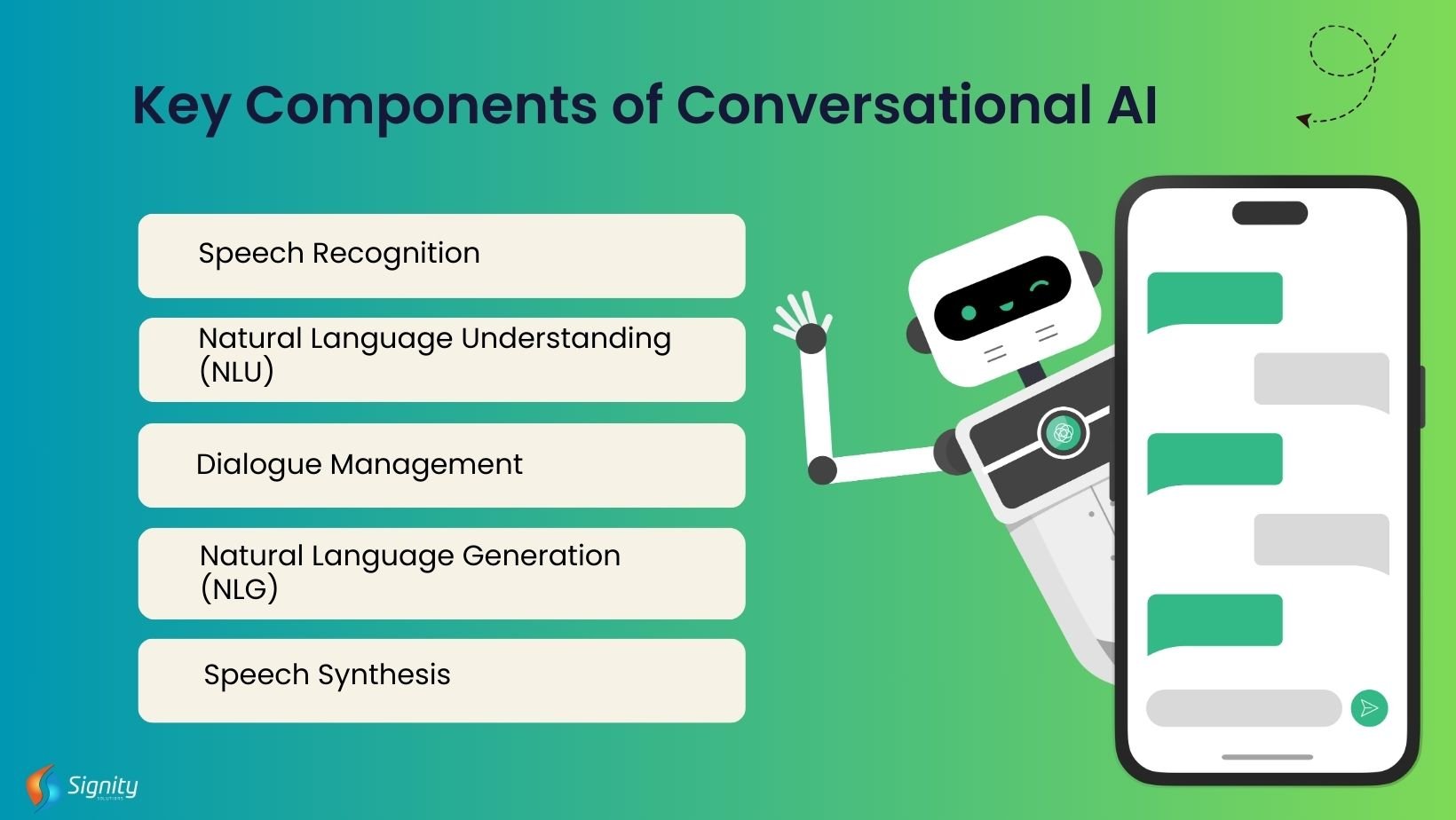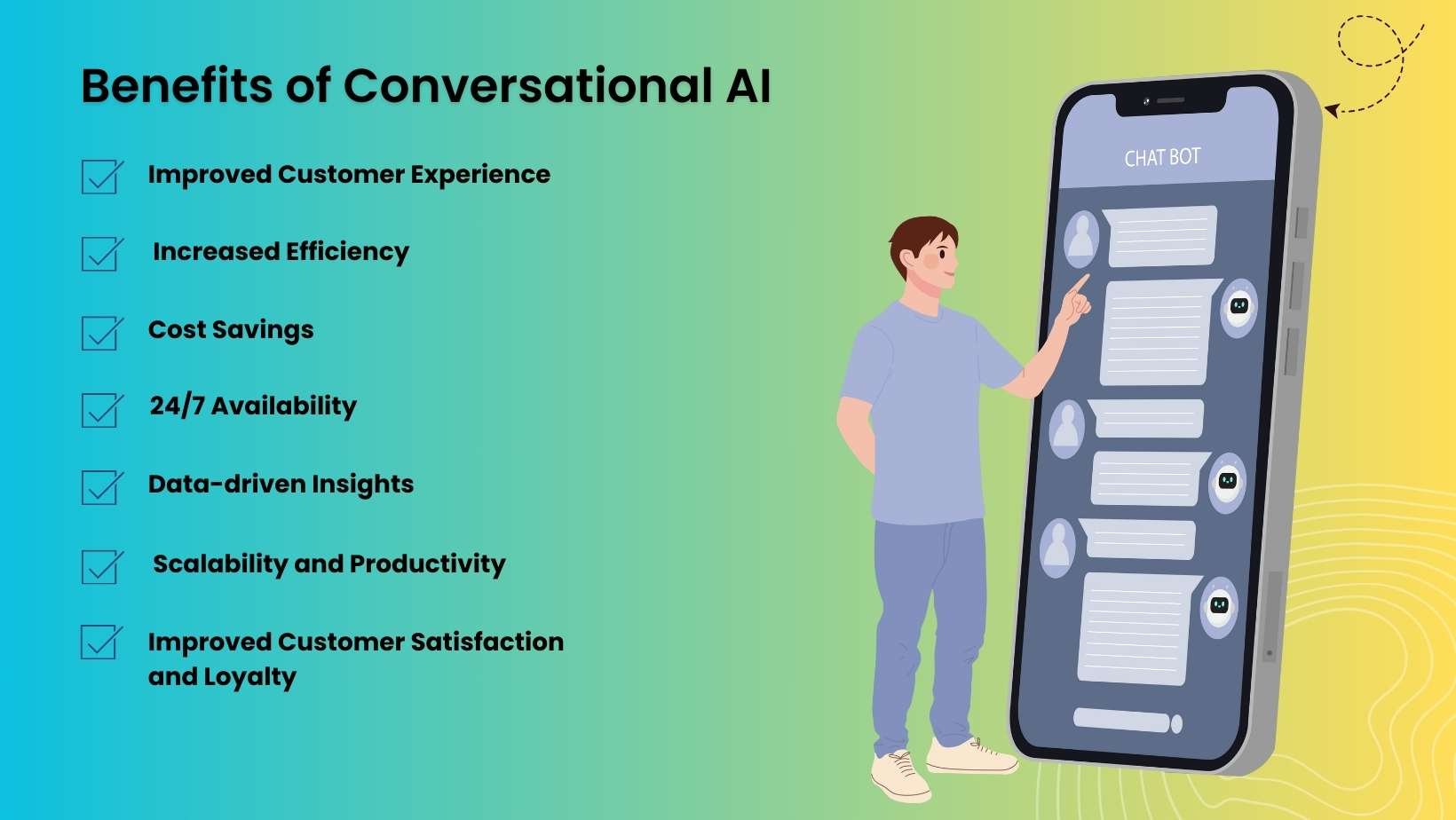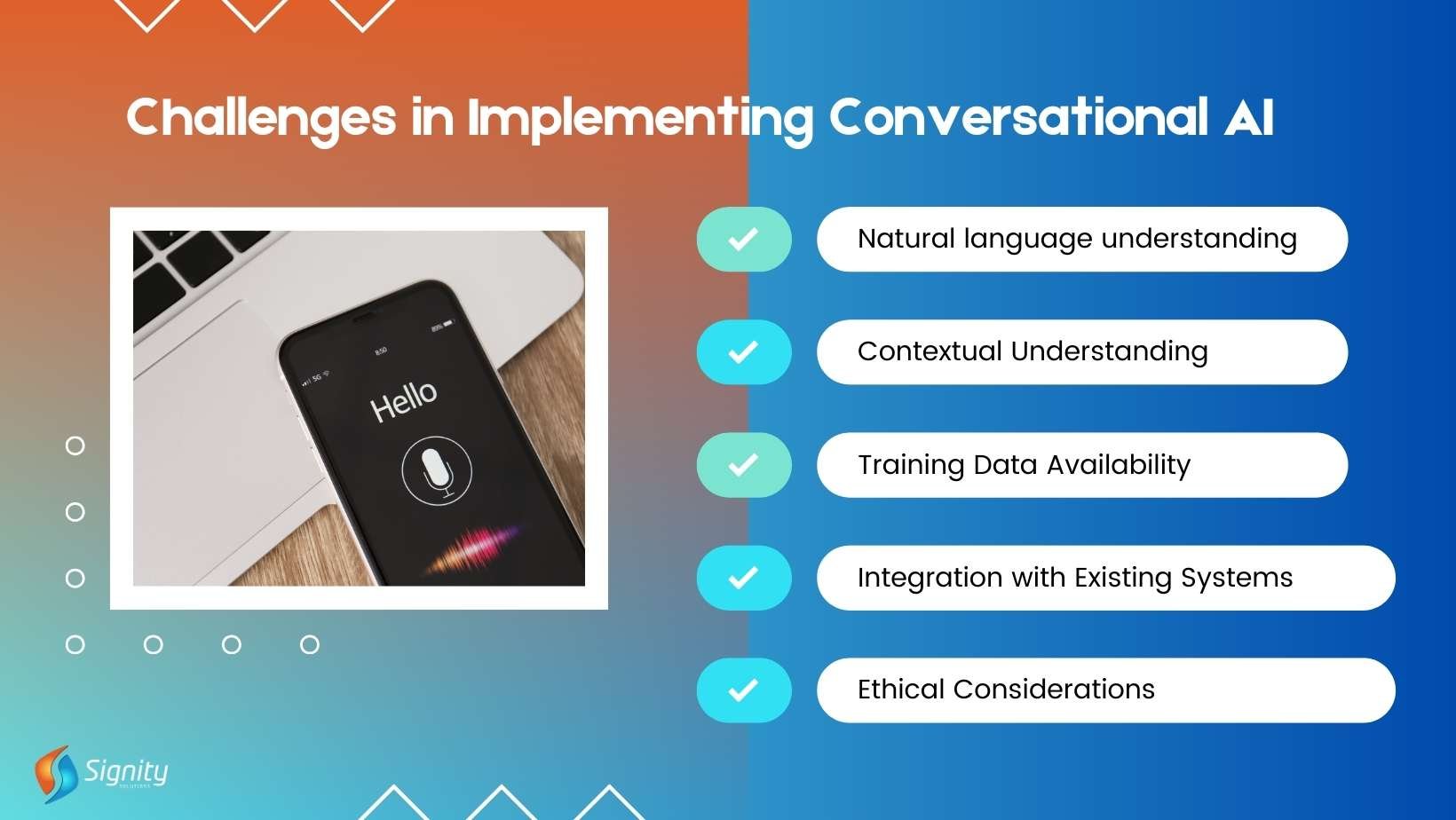What Is Conversational AI?
Conversational AI, utilizing NLP and ML, enables computers to understand and respond to human language, evolving from basic chatbots to sophisticated systems. It enhances various sectors like customer service, healthcare, and e-commerce, offering personalized experiences. Despite challenges like NLU and data availability, its future promises more human-like interactions and multilingual capabilities.

Discover the fascinating world of Conversational AI and how it is transforming the way we interact with technology.
What Is Conversational AI?
Conversational AI, or conversational artificial intelligence, refers to technologies enabling computers to comprehend, process, and generate human language. It leverages natural language processing (NLP) and machine learning (ML) to mimic human interactions, interpreting speech and text inputs across different languages.
Conversational AI encompasses a variety of technologies that work together to enable efficient, automated communication via text and speech by understanding customer intent, deciphering language and context, and responding in a human-like manner.
The Evolution of Conversational AI
From basic chatbots to sophisticated systems, conversational AI has progressed significantly. Initially limited to specific commands, it now mirrors human conversation by understanding context, learning from interactions, and delivering tailored responses. This evolution addresses the growing need for personalized experiences in sectors like customer service, healthcare, and e-commerce.
How Does Conversational AI Work?
Conversational AI utilizes NLP, ML, and deep learning to process user inputs, understand intent, and generate responses. NLP aids in language comprehension, ML trains the system with data to improve accuracy, and deep learning enables human-like conversation simulation.
Conversational AI systems rely on a combination of technologies to understand and respond to user inputs. These technologies include natural language processing (NLP), machine learning, and deep learning.
NLP helps the system understand and interpret human language by breaking down sentences and extracting meaning from them. It involves tasks such as syntactic analysis, semantic understanding, and sentiment analysis.
Related Read: What is Natural Language Processing?
Machine learning algorithms are used to train the conversational AI system by providing it with large datasets and allowing it to learn patterns and make predictions. This enables the system to improve its accuracy and generate more relevant responses over time.
Deep learning, a subset of machine learning, is used to train neural networks that can simulate human-like conversation. These neural networks are capable of understanding context, generating contextually relevant responses, and even mimicking human emotions.
|
💡 Overall, conversational AI systems work by processing user inputs, understanding their intent, generating appropriate responses, and continuously learning and improving through user interactions. |
Key Components of Conversational AI
Conversational AI systems comprise components such as speech recognition, NLU, dialogue management, NLG, and speech synthesis. These elements collaborate to understand, respond to, and engage users in natural conversations.

These components include:
1. Speech Recognition: This component converts spoken language into written text, allowing the system to understand user inputs.
2. Natural Language Understanding (NLU): NLU helps the system extract meaning from user inputs by analyzing the structure and context of sentences.
3. Dialogue Management: This component manages the flow of the conversation and determines the appropriate responses based on user inputs and system capabilities.
4. Natural Language Generation (NLG): NLG generates human-like responses by converting structured data into natural language.
5. Speech Synthesis: This component converts written text into spoken language, allowing the system to communicate with users through voice.
These components work together seamlessly to create a conversational AI system that can understand, respond to, and engage in natural conversations with users.
Conversational AI Industry Applications
Conversational AI finds applications in customer service, healthcare, e-commerce, and finance sectors. It facilitates personalized support, virtual healthcare assistants, enhanced shopping experiences, and efficient banking services.
Some of the key industry use cases include:
1. Customer Service: Conversational AI is being used to provide personalized and efficient customer support through chatbots and virtual agents. These systems can handle common customer queries, provide product recommendations, and even assist with troubleshooting.
2. Healthcare: Conversational AI is being used in healthcare to provide virtual healthcare assistants, help patients schedule appointments, answer medical questions, and provide medication reminders.
Additionally, conversational AI also improves communication between facilities and healthcare providers, like travel nursing agencies and nurses, helping in finding jobs, managing records, and more.
3. E-commerce: Conversational AI is being used to enhance the online shopping experience by providing personalized recommendations, assisting with product searches, and answering customer queries.
4. Banking and Finance: Conversational AI is being used in banking and finance to provide virtual assistants that can help customers with account inquiries, provide financial advice, and assist with transactions.
These are just a few examples of how conversational AI is revolutionizing industries and transforming the way businesses interact with their customers.
Benefits of Conversational AI
Conversational AI offers several benefits that make it a valuable technology in today's digital world. Conversational AI enhances customer experience, improves efficiency, reduces costs, ensures 24/7 availability, provides data-driven insights, boosts scalability, and fosters customer satisfaction and loyalty.

Some of the key benefits include:
1. Improved customer experience: Conversational AI systems can provide personalized and interactive experiences, leading to higher customer satisfaction and loyalty.
2. Increased efficiency: Conversational AI systems can handle a large volume of customer queries simultaneously, reducing the need for human intervention and improving response times.
3. Cost savings: By automating customer service and support tasks, conversational AI systems can help businesses reduce labor costs and improve operational efficiency.
4. 24/7 availability: Conversational AI systems can operate round the clock, providing instant support and assistance to customers regardless of time zones or working hours.
5. Data-driven insights: Conversational AI systems can collect and analyze data from user interactions, providing businesses with valuable insights into customer preferences, behavior, and trends.
6. Scalability and Productivity: It helps businesses scale support processes, increase self-serve rates, and boost agent productivity, leading to improved customer metrics and easier scalability as the business grows.
7. Improved Customer Satisfaction and Loyalty: Conversational AI can enhance customer interactions, streamline support, and provide 24/7 assistance, leading to higher customer satisfaction and loyalty.
These benefits make conversational AI a powerful tool for businesses looking to enhance customer experiences, streamline operations, and gain a competitive edge.
Challenges in Implementing Conversational AI
Implementing conversational AI faces challenges like natural language understanding, contextual comprehension, training data availability, integration complexities, and ethical considerations.

Some of the key challenges include:
1. Natural Language Understanding: Understanding natural language accurately and interpreting user intent can be challenging, especially when dealing with complex queries or ambiguous language.
2. Contextual Understanding: Conversational AI systems need to understand and maintain context throughout a conversation to provide relevant and accurate responses. This can be challenging as context can change based on previous user inputs.
3. Training Data Availability: Building an effective conversational AI system requires large amounts of high-quality training data. Obtaining and labeling this data can be time-consuming and resource-intensive.
4. Integration with Existing Systems: Integrating conversational AI systems with existing business systems and processes can be complex, requiring careful planning and coordination.
5. Ethical Considerations: Conversational AI systems need to be designed and implemented ethically, ensuring user privacy, transparency, and fairness.
Addressing these challenges is crucial for the successful implementation and deployment of conversational AI systems.
Examples of Conversational AI
Popular examples include Amazon Alexa, Apple Siri, Google Assistant, and website chatbots, showcasing the versatility and potential of conversational AI in simplifying tasks and enhancing user experiences.
Some popular examples include:
1. Amazon Alexa: Alexa is a voice-controlled virtual assistant developed by Amazon. It can perform tasks such as playing music, setting reminders, providing weather updates, and answering questions.
2. Apple Siri: Siri is a voice-activated virtual assistant developed by Apple. It can perform tasks such as sending messages, making phone calls, setting reminders, and providing recommendations.
3. Google Assistant: Google Assistant is a virtual assistant developed by Google. It can perform tasks such as answering questions, providing directions, setting reminders, and playing music.
4. Chatbots on websites: Many businesses use chatbots on their websites to provide instant customer support, answer FAQs, and assist with online transactions.
These examples demonstrate the versatility and potential of conversational AI in improving user experiences and simplifying everyday tasks.
Future of Conversational AI
The future of conversational AI is promising, with ongoing advancements in technology and increasing adoption across industries. Some key trends and possibilities for the future include:
1. More human-like interactions: As conversational AI systems continue to improve, we can expect more human-like interactions with virtual assistants, including natural language understanding, emotional intelligence, and contextual understanding.
2. Multilingual Capabilities: Conversational AI systems are likely to become more proficient in multiple languages, enabling seamless communication with users from different linguistic backgrounds.
3. Integration with IoT Devices: Conversational AI systems can be integrated with Internet of Things (IoT) devices, allowing users to control and interact with their smart homes, appliances, and other IoT-enabled devices through voice commands.
4. Personalization and Customization: Conversational AI systems can be personalized to individual users, learning their preferences, habits, and needs to provide tailored recommendations and assistance.
5. Enhanced Security and Privacy: Future conversational AI systems will prioritize user security and privacy, implementing robust measures to protect sensitive information and ensure user trust.
These advancements and possibilities indicate that conversational AI will continue to revolutionize the way we interact with technology and reshape various industries.
Frequently Asked Questions
Have a question in mind? We are here to answer. If you don’t see your question here, drop us a line at our contact page.
How does Conversational AI benefit businesses?
![]()
Conversational AI enhances customer experience, streamlines operations, reduces costs, provides valuable insights, and fosters customer satisfaction and loyalty, making it a valuable tool for businesses seeking a competitive edge.
What are the ethical considerations with Conversational AI?
![]()
Ethical considerations include ensuring user privacy, transparency, fairness, and avoiding biases in AI systems, highlighting the importance of responsible development and deployment practices.
How does Conversational AI benefit businesses?
![]()
Conversational AI enhances customer experience, streamlines operations, reduces costs, provides valuable insights, and fosters customer satisfaction and loyalty, making it a valuable tool for businesses seeking a competitive edge.
Can you provide examples of Conversational AI?
![]()
Popular examples include Amazon Alexa, Apple Siri, Google Assistant, and website chatbots, showcasing the versatility and potential of Conversational AI in simplifying tasks and enhancing user experiences.


%201-1.webp)


.png?width=344&height=101&name=Mask%20group%20(5).png)



















